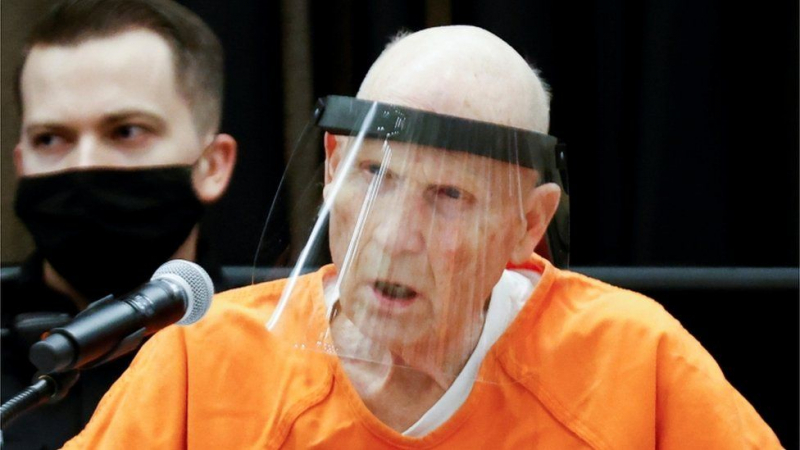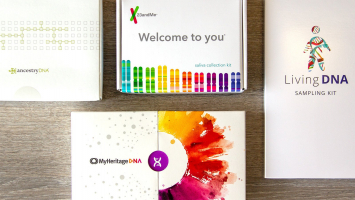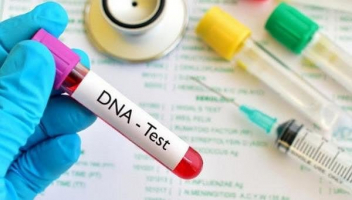Top 10 Crimes Solved by DNA Ancestry Companies
In the last century, DNA has been the single most valuable instrument in the investigation of crimes. Genetic evidence has been shown to be capable of solving ... read more...murders that have gone unresolved for decades, but the issue is typically how to obtain the DNA required to solve those crimes. It is not sufficient for a criminal to leave evidence at a crime scene; law enforcement must have something to match it to. Enter the genealogy business. In recent years, so many people have willingly uploaded their own DNA information to public websites that law enforcement has been able to solve dozens of previously unsolvable crimes. Here is a list of top 10 Crimes Solved by DNA Ancestry Companies that you should not miss.
-
The case of an elderly woman being molested in her church is unique among nearly all situations in which genetic testing has been used to track down a suspect. Parabon Nanoloabs, like many others, was essential in assisting law police in locating the criminal, but what made this case special was the crime. This was one of the few occasions where the perpetrator did not rape or murder their victim; instead, an assault was being probed.
Police claimed that because the criminal had the potential to commit another crime, they needed to take exceptional measures to discover them. Parabon employed GEDMatch and a DNA sample recovered at the crime scene. The assailant had shattered a window to gain entry to the church, where he strangled the woman from behind while she played the organ. She went unconscious multiple times and had no idea who it was. However, the person had left blood on the window through which they entered.
Although the sample was not in any criminal database, GEDMatch proved to be more effective. The sample was matched to an uncle of the defendant who referred law enforcement to a relative who lived near where the crime took place. The culprit, a 17-year-old high school student, was apprehended by police. They had school officials watch him at lunch one day and seized a discarded milk carton from his meal after it had been thrown away. The DNA from the milk container was matched to the blood on the window.
The case isn't particularly noteworthy in and of itself, but it did send shockwaves across the industry. It was unusual for Parabon to utilize their technology to track down someone who had committed an assault rather than for more severe offenses. According to GEDMatch, their database is not to be accessed by law enforcement except in situations of murder, rape, or kidnapping. The CEO ignored his own guidelines to enable this one to go through, resulting in a significant reaction. As a result, GEDMatch changed their guidelines to be considerably stricter about how and when law enforcement can access records.

medlatec.vn 
medlatec.vn -
The Potomac River Rapist is one of the Crimes Solved by DNA Ancestry Companies. The man known as the Potomac River Rapist was feared throughout Washington, DC in the 1990s. He committed at least 10 rapes from 1991 to 1998 by cutting phone lines and restraining and raping women in their own homes. As his crime spree progressed, he became more violent and would brutally assault his victims and eventually even murder Christine Mirzayan. Unfortunately, police were only coming up with dead ends at the time and the killer escaped justice for decades.
The tides did not turn until one of the killer's own family performed a home DNA test and submitted the results to GEDMatch. Parabon Labs was able to establish a relationship between the DNA of the family member and genetic material from the crimes. They were eventually able to apprehend Giles Daniel Warrick, 60, and charge him with the rapes and murder.
Born: October 16, 1959
Died: November 19, 2022
Years active: 1991-1998
fbi.gov -
During a standoff with police in 1999, Robert Brashers committed suicide. The cops were chasing him because he had a long criminal record. In 2018, DNA evidence connected him to three cold case homicides, one of which included a 12-year-old girl. The crime was committed in 1998. Following the murders, the killer attempted to resume his spree at another residence with another family. Despite the fact that he shot the victim, they did not die and were able to identify the offender.
When a relative of Brashers uploaded their DNA to GEDMatch, it was matched to a 14-year-old girl's rape. Brashers was described by authorities as a serial killer and rapist with a long criminal history that included impersonating a police officer, burglary, and firearms offences. Even though Brasher was already dead, there was some relief for the relatives of his victims who had no idea what had happened to their loved ones.
Born: March 13, 1958 Newport News, Virginia, U.S.
Died: January 13, 1999 Kennett, Missouri, U.S.
drphil.com -
Bobby Whitt, 10, was discovered dead under a billboard in California in 1998 by a landscaping team. When the body was located, it was identified as a John Doe. Nobody had reported a missing youngster, and there was no evidence of who he could have been. His identity was not revealed until 2019.
Police investigated a link between the boy and the case of an unidentified woman discovered in South Carolina the same year. DNA comparisons confirmed the woman had been the mother of the boy. Myong Hwa Cho had told friends she was returning to South Korea, so when she was not seen again, no one noticed. DNA was able to locate her relatives and then John Russell Whitt, whom she met while stationed in South Korea and who was the boy's father. Whitt was already serving a term for armed robbery when the murder convictions were added to his record.
Date: 1998

npr.org -
Roy Charles Waller (born January 8, 1960) is an American serial rapist. He was arrested in September 2018 as a suspect in the series of hoodlums and abductions committed between 1991 and 2006 in six Northern Californias (NorCal rapist). DNA evidence from the school's current mission was matched on the online DNA matching task, GEDmatch, with a relative of Waller, and he was verified through a genetics-based system.
Police created a genealogy tree and used known elements of the rapist, luring the suspects down to Waller. After confirming the GEDmatch, it took them about a week to identify and capture the scope. He was charged with total rape, which took place in five different counties, including Sonoma, Solano, Contra Costa, Yolo and Butte. At the time of his arrest, he was living in Benicia, married, and employed as a safety expert at the University of California Berkeley. He worked there for 26 years. He was convicted of 46 counts in November 2020. The same communications systems technique was used to identify and arrest the suspect known as the Golden State Killer.
Born: January 8, 1960
Years active: 1991–2006

nbcbayarea.com -
Curtis Kimball is a serial killer. Larry Vanner and Gordon Jenson are as well. They're all the same individual, of course. And, despite previously pleading no contest to second degree murder, Kimball famously revealed at a pre-trial hearing in 2003 that he had murdered Eunsoon Jun. Kimball, whose real name is Terry Peder Rasmussen, had previously done time in prison for child abandonment and other offenses. Nobody knew he had a slew of identities and had been a prolific serial killer of women and children for years. As a result, law enforcement dubbed him the Chameleon.
Police were able to connect the guy who abandoned a 5-year-old daughter in the 1980s to the murder of Eunsoon Jun and discover that Kimball, Vanner and Jenson were all the same man. They didn't know he was Terry Peder Rasmussen at this moment, and they wouldn't for another decade. Ramussen was not the father of Lisa, the girl he was arrested for leaving in the 1980s, when authorities performed a paternity test on her. Curtis Kimball, the guy he claimed to be, simply did not exist prior to his arrest.
The girl, now in her twenties, was ordered by police to submit her DNA to Ancestry.com and 23andMe. The data revealed some distant cousins, and they used the information to create a family tree. They were able to locate the girl's grandfather, whose own daughter had long since vanished. That daughter turned out to be Lisa's mother. When his granddaughter left with her mother and her mother's lover, a man called Bob Evans, in 1981, the grandfather last saw her. Rasmussen, of course, was Evans.
Police then analyzed the DNA of four bodies discovered in barrels in Bear State Park throughout the years in the hopes of finding Lisa's mother. The DNA sequences did not match. However, the DNA of one of them did match Bob Evans. He had murdered a relative. Using his DNA, a new family tree was created, and detectives were able to locate Rasmussen. He was imprisoned and died in 2010.
Born: December 23, 1943
Died: December 28, 2010
Years active: 1978–2002
abcnews.go.com -
The Murder of Lorrie Ann Smith ranks 7th in the list of Crimes Solved by DNA Ancestry Companies. Back in 1997, 28-year-old Lorrie Ann Smith was discovered in her own room by her parents. She had been shot to death and there was no sign of forced entry in the home. Police had very little to go on and the case was stalled out.
There had been no robbery, but there were hints Lorrie had attempted to fight off her assailant. As a result, DNA was left at the scene, but it had no match in the system, as in many of these cases. In 2017, a relative whose DNA matched the killer's submitted a sample to an ancestry website. Law enforcement was able to identify Jerry Lee, a prison officer, as the murderer thanks to Parabon's assistance. Lee was also charged with burglary, however it is unclear how he knew the victim or the nature of the offense.
Date: 1997

umwestern.edu -
A series of three unsolved rapes occurred in Cobb County, Georgia, in 1999. The police were able to acquire DNA from the crimes but there was no match in the criminal database to narrow down the field to a suspect. Law enforcement turned to Parabon Nanolabs, a business that specializes in DNA phenotyping, which can help law enforcement solve crimes. Phenotyping is the ability to forecast the appearance of anything based on genetic markers, thus the corporation can essentially study DNA and then predict how the suspect looks. It cannot provide a perfect image of the individual, but it can provide information such as hair color, eye color, and skin color. When DNA ancestry data is added, you have a powerful tool for catching serial murders.
With the assistance of Parabon, law enforcement was able to locate the killer's distant ancestor on the website GEDMatch. This helped them to zero in on a suspect in the rape cases. Police discovered a suspect with a criminal history of burglary and being a peeping tom. They compared DNA samples from the suspect and determined that he was, in fact, the rapist. However, shortly after submitting the sample to legal enforcement, the guy committed suicide, effectively ending the case.
Date: 1999

ajc.com -
Helene Pruszynski disappeared in January 1980. It was assumed she had vanished while walking to a bus station. Her body was recovered in a field the next time anyone saw her. She'd been raped and murdered with a knife. Many leads were not followed up on by the authorities, and no one was ever apprehended for the crime. It wasn't until many years afterwards. Jesse Still, like many other people, used the website 23andMe in 2018 to learn more about her family tree. What she couldn't have realized at the time was that she was inadvertently informing the authorities about what had occurred to Helene Pruszynski 40 years before.
Law enforcement detected Still's DNA. It shared some of the DNA with the murderer's genetic makeup. Of course, not Stills herself, but a family relative. Stills was revealed to be Helen Pruszynski's killer's cousin. Still, ironically, donated her DNA to the site because she was a true crime buff who was particularly interested in the case of the Golden State Killer. She was aware that the killer had been apprehended thanks to DNA obtained from a genealogy website and wished to upload her own in the hope that it would be useful to someone one day. Two months later, she was contacted by law authorities about a possible link to the murderer. With Still’s help, law enforcement built a family tree and came up with James Clanton, a relative she didn’t even know she had.
Date: 1980

nytimes.com -
The infamous Golden State Killer was apprehended in 2018, more than 30 years after he stopped a campaign of rapes and murders that left 13 victims dead and 50 raped, in what is perhaps the most famous case of DNA from an ancestry site being used to solve a crime. The Golden State Killer was known as the original Night Stalker, the Visalia Ransacker, and the East Area Rapist during his original crime spree. It wasn't until 2001 that DNA evidence was used to prove that all three of those perpetrators were the same person who had been performing his crimes throughout the 1970s and 1980s.
In 2018, law enforcement took an unusual step by searching genealogy websites for a match to the DNA they had on file. They were able to score some partial matches by using databases of genetic material supplied by people who were only interested in learning about their family history. That meant the services were utilized by persons who were genetically connected to the killer.
A 1,000-person family tree was created to help identify the murderer. The tree was then pruned by removing persons who were the incorrect age or resided in the wrong part of the world when they died. After a while, only one name remained on the list: Joseph James DeAngelo. The former police officer was arrested and charged with multiple murders. He took a plea to avoid the death penalty and at age 70 the Golden State Killer was given 12 life sentences.Born: November 8, 1945
Years active: 1974–1986

bbc.com 
bbc.com






























